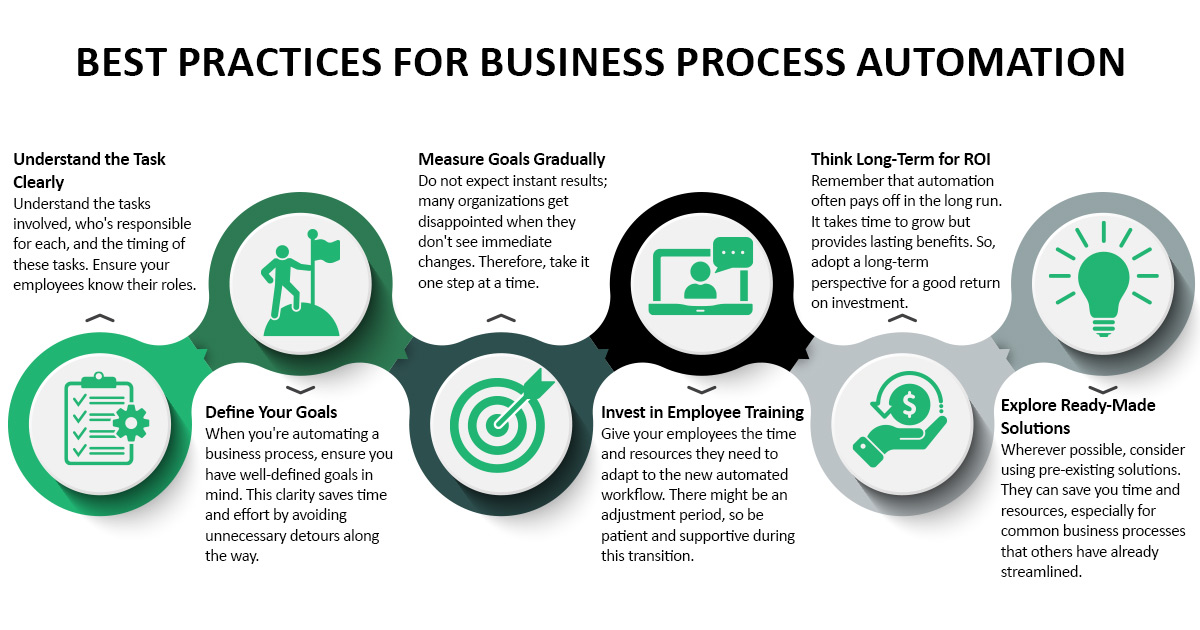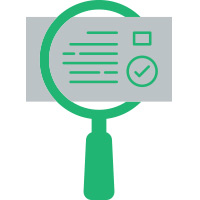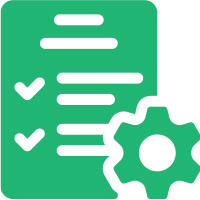
According to a report by Analytics Insights, 80% of organizations will adopt intelligent automation. This means business process automation (BPA) is now necessary for C-suite executives who want to fully embrace digital transformation.
Manual processing delays, human errors, and inefficient business systems often result in significant financial losses for businesses each year. Therefore, to maintain competitiveness, automating business processes is critical. So, how exactly does a business process automation solution address these pressing issues? Business process automation solutions save time and money and liberate your staff from the burden of repetitive tasks, especially in projects. This, in turn, allows your team to focus on their core roles and responsibilities. However, nearly 90% of automation projects fail due to technical challenges, the burden of high implementation costs, the absence of a clear strategy, and resistance to change. So, how do you overcome such challenges?
This article will explore the topic comprehensively, including its benefits and examples. We will also discuss how artificial intelligence-enabled predictive analytics is changing the business process automation game and provide insights into how you can implement it to streamline your operations.
What is Business Process Automation?
Business process automation uses cutting-edge technology to execute routine manual processes while minimizing the need for direct human involvement. This can range from basic tasks like setting up automated email responses or follow-ups to more intricate processes like automating multi-level approval workflows.
Manually handling these workflows involves numerous email exchanges, documents, and multiple handoffs. Even a minor slip-up can have a cascading effect, leading to inefficiencies, breakdowns in communication, bottlenecks, and missed deadlines. These challenges become increasingly complex as your operations scale up.
Modern technology, such as predictive intelligence solutions, addresses these challenges. By implementing a flexible and scalable business process automation strategy, you can regain control over your business processes, enhance communication, elevate customer satisfaction, and reduce confusion.
Business Process Automation Examples
Now that you know business process automation, let’s look at tangible use cases of BPA. A good plan should keep business users and the customer experience in mind. Here are a few use cases for you to get a better understanding of how you can use automation:
 Employee Onboarding: Onboarding an employee involves several manual tasks, such as filling out forms, scheduling training sessions, and setting up bank accounts. Automating these processes reduces paperwork, ensures all steps are completed, and informs relevant managers and employees.
Employee Onboarding: Onboarding an employee involves several manual tasks, such as filling out forms, scheduling training sessions, and setting up bank accounts. Automating these processes reduces paperwork, ensures all steps are completed, and informs relevant managers and employees.
 IT Service Desk Support: IT departments often face a high volume of incoming support tickets. Automation software can analyze, categorize, and route these tickets to the appropriate support personnel. Additionally, it provides updates to customers and alerts IT staff to critical issues for compliance reasons. Advanced systems use AI to predict, manage, and resolve common user issues.
IT Service Desk Support: IT departments often face a high volume of incoming support tickets. Automation software can analyze, categorize, and route these tickets to the appropriate support personnel. Additionally, it provides updates to customers and alerts IT staff to critical issues for compliance reasons. Advanced systems use AI to predict, manage, and resolve common user issues.
 Customer Onboarding in Finance: In the banking industry, conducting background checks on new customers is crucial to meeting regulatory requirements, like Know Your Customer Rule 2090. With the help of artificial intelligence-powered solutions, business process automation streamlines these processes, making them faster and more customer-friendly.
Customer Onboarding in Finance: In the banking industry, conducting background checks on new customers is crucial to meeting regulatory requirements, like Know Your Customer Rule 2090. With the help of artificial intelligence-powered solutions, business process automation streamlines these processes, making them faster and more customer-friendly.
 Marketing Automation: Business process automation solutions help companies target customers with automated marketing messages through various channels, such as email, websites, social media, and text messages. This technology is part of customer relationship management (CRM) and helps remove repetitive tasks from staff workflows.
Marketing Automation: Business process automation solutions help companies target customers with automated marketing messages through various channels, such as email, websites, social media, and text messages. This technology is part of customer relationship management (CRM) and helps remove repetitive tasks from staff workflows.
 Stakeholder Feedback Automation: Automating stakeholder feedback collection and deriving insights for project health tracking is critical for project success in project management. Automating this process reduces manual efforts and provides real-time insights into project health, enabling timely interventions to mitigate risks and assure success. This benefits continuous project oversight, giving management a data-driven edge to course-correct when necessary.
Stakeholder Feedback Automation: Automating stakeholder feedback collection and deriving insights for project health tracking is critical for project success in project management. Automating this process reduces manual efforts and provides real-time insights into project health, enabling timely interventions to mitigate risks and assure success. This benefits continuous project oversight, giving management a data-driven edge to course-correct when necessary.
Why is automating business processes such a valuable strategy? Let’s understand some reasons for automating your business processes.

Importance of Business Process Automation
Stepping Stone to Digital Transformation
Business process automation serves as a stepping stone toward embracing a culture of continuous improvement. You can start with a few processes on your ongoing projects that need improvement and gradually work your way up.
Get More Clarity
Automating processes requires a clear understanding of the workflow from the outset. It forces you to define tasks and responsibilities, leading to a more efficient process. It also highlights the gaps between the current and ideal processes.
Streamline Processes
Automation leads to streamlined processes with clear accountability, notifications, insights, and quicker turnaround times. This makes it easier to eliminate wasteful activities in projects or business initiatives and focus on tasks that add value.
Get Compliance Records
Automation records every process detail, which is incredibly useful during audits. It demonstrates compliance and helps maintain regulatory standards.
Standardize Operations
Business process automation ensures consistent outcomes every time. This standardization builds a reputation for reliability, which can help expand your customer base.
Increase Customer Satisfaction
Customer satisfaction is crucial in any industry. By focusing on process and operational excellence, you can consistently meet customer expectations, leading to customer preference for your company.
Are you curious about the technology behind business process automation? Let’s explore that too.

How Is Predictive Intelligence in Business Process Automation Changing the Game?
Predictive intelligence technology is more than a mere buzzword. It represents a transformative wave in the business landscape. How, you ask?
Adaptive Automation
Unlike fixed-rule-based automation, predictive analytics is not bound by rigid programming. It's more like a smart learner who can adapt and evolve. This adaptability allows the technology to respond dynamically to various scenarios, making it highly versatile in handling processes.
Continuous Learning and Improvement
AI-powered automation systems are like human learners but with supercharged capabilities. They keep learning and improving at an accelerated rate, resulting in proficiency and efficiency that can be quite challenging for human workers to achieve independently.

Expanding Applicability through Machine Learning
As predictive analytics advances, it can handle intricate and multifaceted processes.
Smart Investments for Businesses
The evolving nature of predictive intelligence solutions offers businesses a compelling return on investment through predictive project management. Investing in AI-powered solutions for business automation or project management is akin to hiring an employee who continually gets better at their job, enhancing the company's efficiency. Large corporations, like Facebook, recognize this potential and invest in AI research and applications to stay at the forefront of this transformative technology.
If you are wondering how to automate your business processes, we have you covered. Let’s examine some critical steps to follow while implementing business process automation.
Steps for Implementing Business Process Automation
Assess Your Readiness for Automation
 Before diving into a BPA project, it's crucial to gauge whether your organization is ready for this transformative change. Business process automation alters how work is done, so gaining support from key stakeholders is necessary. Keep your employees informed and involved. Whether simplifying a paper-based process or embarking on a comprehensive automation journey, ensuring your team understands the value BPA brings to their roles is essential.
Before diving into a BPA project, it's crucial to gauge whether your organization is ready for this transformative change. Business process automation alters how work is done, so gaining support from key stakeholders is necessary. Keep your employees informed and involved. Whether simplifying a paper-based process or embarking on a comprehensive automation journey, ensuring your team understands the value BPA brings to their roles is essential.
Understand Your Current Processes
 You can only plan a journey if you know your starting point. Before you introduce automation, you must have a deep understanding of your current projects and processes. Dig into the intricacies of your existing business processes, initiatives, and projects and the rules governing them. While it might be a complex task, it's a crucial first step.
You can only plan a journey if you know your starting point. Before you introduce automation, you must have a deep understanding of your current projects and processes. Dig into the intricacies of your existing business processes, initiatives, and projects and the rules governing them. While it might be a complex task, it's a crucial first step.
Define Your Project Scope
 The scale of your automation project matters. If your organization is new to automation, starting with smaller, more straightforward projects, tasks, or business initiatives is often a good idea. These could be routine, rule-based activities like managing purchase orders, where the steps are clear and well understood.
The scale of your automation project matters. If your organization is new to automation, starting with smaller, more straightforward projects, tasks, or business initiatives is often a good idea. These could be routine, rule-based activities like managing purchase orders, where the steps are clear and well understood.
Collaborate with Key Stakeholders
 Automating a flawed process without examining the room for enhancement perpetuates existing issues. While there's some debate about this, especially for those seeking quick wins, most business process automation experts agree that involving key stakeholders and the project teams and thoroughly analyzing processes is essential. This input should come from various sources, including business analysts, development teams, and IT, to ensure a successful automation project.
Automating a flawed process without examining the room for enhancement perpetuates existing issues. While there's some debate about this, especially for those seeking quick wins, most business process automation experts agree that involving key stakeholders and the project teams and thoroughly analyzing processes is essential. This input should come from various sources, including business analysts, development teams, and IT, to ensure a successful automation project.
What’s the Way Ahead?
Today, business process automation is a strategic necessity for organizations looking to thrive in the digital age. The challenges of manual processing, human errors, and inefficient systems can no longer be ignored, and automation offers a path to efficiency, cost savings, and improved employee engagement. However, the road to successful business process automation is not without its hurdles, including technical challenges, high implementation costs, and resistance to change. Planning and implementing your automation strategy carefully is crucial to overcome these obstacles.
Moreover, integrating predictive intelligence in automation is a game-changer, providing adaptability, continuous learning, and expanded applicability in handling complex processes. TrueProject, a KPI-based predictive project management SaaS solution for improving project health and performance, ensures that automating workflows is a breeze. Flexible monitoring with customizable dashboards helps you make informed decisions with real-time insights. TrueProject offers your project teams a seamless and non-intrusive experience, whether they access the assessments from their desktop or mobile devices.
Business process automation is not just about optimizing operations; it's a stepping stone to a culture of continuous improvement, standardization, compliance, and, ultimately, higher customer satisfaction. Embracing this transformative approach can pave the way for a brighter future in the ever-evolving business world.
About the Author
 Nivedita Gopalakrishna is a content marketing specialist within the TrueProject Marketing team with extensive experience in blog writing and website content creation across diverse industries. Nivedita’s proficiency in crafting engaging blog posts and informative website content is a testament to her years of experience. Beyond her prowess in written communication, Nivedita has a knack for creating visually appealing static graphics that have played a pivotal role in expanding TrueProject's marketing efforts. She has helped convey the brand's essence through thoughtful design choices and captivate audiences effectively. Outside the professional sphere, Nivedita is a trained classical singer and a fitness enthusiast, embodying creativity and wellness in and out of the office.
Nivedita Gopalakrishna is a content marketing specialist within the TrueProject Marketing team with extensive experience in blog writing and website content creation across diverse industries. Nivedita’s proficiency in crafting engaging blog posts and informative website content is a testament to her years of experience. Beyond her prowess in written communication, Nivedita has a knack for creating visually appealing static graphics that have played a pivotal role in expanding TrueProject's marketing efforts. She has helped convey the brand's essence through thoughtful design choices and captivate audiences effectively. Outside the professional sphere, Nivedita is a trained classical singer and a fitness enthusiast, embodying creativity and wellness in and out of the office.
Endnotes:
- “What is business process automation?” Red Hat, January 20, 2022. https://www.redhat.com/en/topics/automation/what-is-business-process-automation#how-is-bpa-related-to-bpm
- Lawton, George; Tucci, Linda. “business process automation (BPA)” TechTarget, April 2022. https://www.techtarget.com/searchcio/definition/business-process-automation
- “Business Process Automation: A Complete Guide for 2024.” Kissflow, November 02, 2023. https://kissflow.com/workflow/bpm/business-process-automation/#examples
- Takyar, Akash. “From Rigid to Robust: How AI in Business Process Automation Is Changing The Game?” LeewayHertz, (n.d.). https://www.leewayhertz.com/ai-in-business-process-automation/
- Team Asana. “What is business process automation? Tips to eliminate busywork.” Asana, November 13, 2022. https://asana.com/resources/business-process-automation





